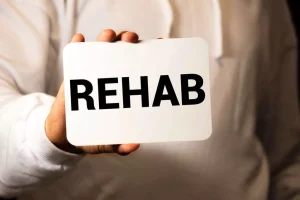
More than 24 MLB suspensions have been related to performance-enhancing drugs since 2005; on the NFL side, hundreds of games have been missed due to temporary suspensions related to doping. Performance-enhancing drugs (PEDs) are substances used to improve physical ability, notorious for their illegal use in athletic competitions. While these substances may not be illegal in general use, their clandestine use in sports, known as doping, is commonly prohibited.

How Policies Compare Across the Major Sports

This, however, limits the extent to which we can understand how both risk and enabling factors and processes are intertwined with one another. Simply adding harm reducing strategies to a risk environment does not automatically make an enabling environment – introducing a service does not necessarily mean it will be, or can be, used. In sum, the processes of building enabling environments require simultaneously understanding the multi-layered risk environments that may limit their impact and effectiveness – or be shaped positively in turn.

Drug abuse in athletes
Understanding why and how athletes’ drug misuse occurs is critical in preventing addiction and treating it in those already struggling. Any player testing positive for a drug of abuse or found to possess such a drug must submit to an initial evaluation by medical personnel, who then determine whether or not a treatment program is necessary. The treatment program is agreed upon by medical personnel and the player, who can complete treatment as either an inpatient or an outpatient.
- A recent review of the literature concluded that the “doping” rate among elite athletes was between 14% and 39%, although there was considerable variation among different types of sports and hard data on the question is lacking (de Hon, Kuipers, & van Bottenburg, 2015).
- It can be surmised that this paradigm may change after certain events such as injury and retirement which may lead to more vulnerability.
- It is unclear what will be the final outcome of doping war, but new questions and issues constantly present new challenges for both groups.
- It then becomes imperative that athletes avoid detection, a situation that can be tricky for an individual athlete to manage on their own.
- In combination with everyday responsibilities like childcare, school, or work, the resulting stress can lead athletes to try various substances attempting to increase their performance or reduce their response to stressors.
How is doping detected?
Before 1998, debate was still taking place in several discrete forums (IOC, sports federations, individual governments), resulting in differing definitions, policies, and sanctions. Athletes who had received doping sanctions were sometimes taking these sanctions, with their lawyers, to civil courts and sometimes were successful in having the sanctions overturned. The Tour de France scandal highlighted the need https://ecosoberhouse.com/ for an independent, nonjudicial international agency that would set unified standards for anti-doping work and coordinate the efforts of sports organizations and public authorities. The IOC took the initiative and convened the First World Conference on Doping in Sport in Lausanne in February 1999. Following the proposal of the Conference, the World Anti-Doping Agency (WADA) was established later in 1999.
What next in the fight against doping?
Transcranial direct current stimulation applies a low-intensity direct current through two electrodes over the scalp producing an electrical field in the brain leading to neuronal changes powered by a battery-operated machine. Low-intensity current is given for 30 min per session and the drug use in sports number of sessions can vary. Common side effects are limited and can involve nausea, dizziness, headache and skin irritation. One potential benefit of this type of treatment is that it can allow the possibility of home treatment providing flexibility and protecting confidentiality.
Recovery Programs for Athletes
The sport risk environment is that in which various risk factors interact across micro and macro levels to increase the potential for harm to athletes engaging in doping (Hanley Santos & Coomber, 2017; Rhodes, 2002). By shifting the focus from the individual athlete to the sporting context, we can see how harms to doping athletes are socially produced (c.f. Rhodes, 2002). Such an approach seems more or less impossible to combine with the cultural beliefs and discourse around values of fair-play and sportsmanship in the elite sport context. While harm reduction strategies and interventions for recreational drug use have flourished, sport has remained stubbornly bullish on a detect and punish approach (Henning & Dimeo, 2018), not only in elite sport but also in recreational and non-competitive sport contexts.

- Current anti-doping measures rely primarily upon the punishment of athletes who use performance-enhancing drugs.
- Globally, anti-doping efforts are led by the World Anti-Doping Agency (WADA), the umbrella organisation responsible for policymaking and harmonisation (WADA, 2019).
- Behavioral economic theory also posits that alcohol and drug use will be lower when individuals are orientated toward future rewards incompatible with substance use, such as successful educational and vocational outcomes (Murphy & Dennhardt, 2016).
- To date, the literature is filled with a limited number of high-quality systematic reviews in the field of addiction related to athletes and these studies mainly examine a small number of studies [14,15,26,27,29].
- Substances like fentanyl and xylazine make the drug supply unpredictable and increase the risk of overdose and other harms of drug use.
The downside of this treatment is that it is not currently FDA approved and its use is considered investigational or experimental at this time in the United States. More randomized controlled studies are needed to be performed to demonstrate the potential true benefit of this treatment especially in sports population. Many athletes may be hesitant to using any treatment that was not FDA approved due to fears of violating the rules by which their sports are governed. Going out for a drink after competition or training is a part of the culture of many sports.



